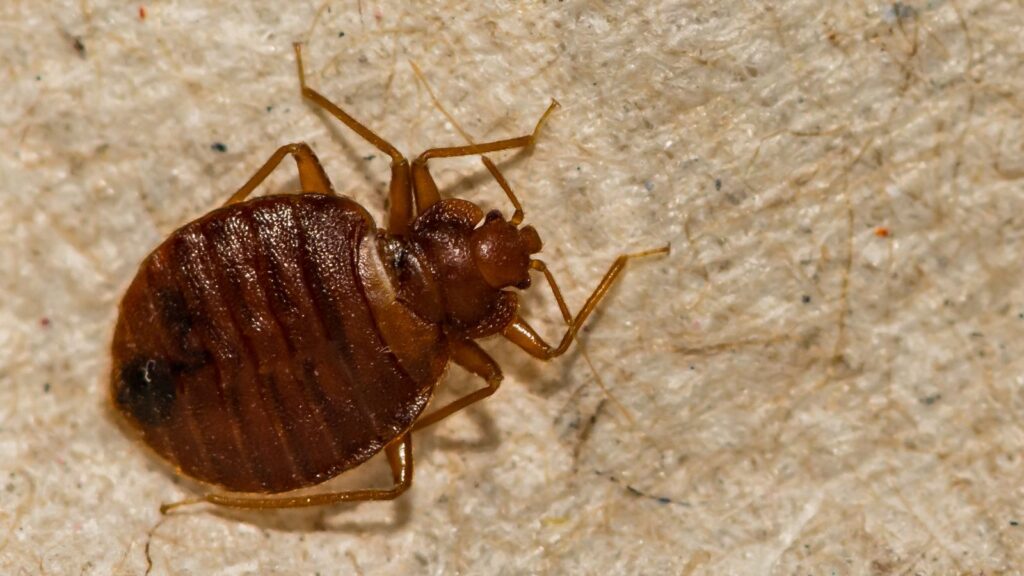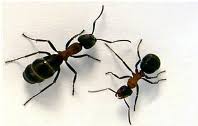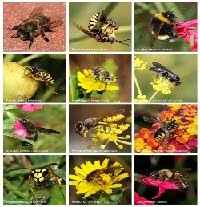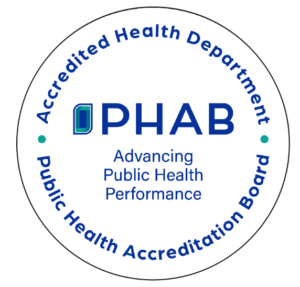The Lake County General Health District (LCGHD) receives numerous calls and complaints regarding bed bugs, ticks, and other insects each year. LCGHD does understand that invading insects can be very troublesome. Currently, there are no regulations for enforcement on bed bugs and in most cases needs to be addressed between landlord and tenants. If you are experiencing problems due to insects, we recommend contacting a pest control professional or exterminator. If you would like more information and helpful links on bed bugs, ticks, ants, bees, or cockroaches, they can be found in the three tabs below.
Bed Bugs
Bed Bugs

Bed bugs get their name due to their tendency to live in and around where we sleep. They usually feed on blood from people or animals at night and can be found in workplaces, homes, apartments, hotels, shelters, dormitories, nursing homes, and any other places people gather. People can unknowingly carry them into their home or workplace on clothing, furniture, luggage, or other items. Fortunately, bed bugs are not directly associated with disease transmission, but they can be challenging and expensive to exterminate.
Identifying Bed Bugs
Bed bugs are small, flat, oval, reddish-brown, wingless, and about ¼ inch long as adults. Young bugs are often lighter, appearing almost clear. Bed bugs do not fly or jump, but they can crawl quickly. Some people have reactions to bed bug bites, while others do not. There are other insect bites that look very similar to bed bug bites. The best way to be sure that you have bed bugs is to find evidence of the bugs themselves. Bed bugs live near where people sleep. They would rather live on fabric, wood, or paper instead of metal or plastic.
Inspecting For Bed Bugs
Start in the areas where people sleep. Look for bugs, eggs and cast skins, especially in protected areas such as the seams or edges of mattresses and box springs. Also, keep an eye out for small black or rust-colored spots, which could be fecal matter or blood spots. Some other good places to look include around headboards, in recliners or other upholstered furniture, at the edge of the carpet, in gym bags, and in nearby clothing, curtains, or stuffed animals. Sometimes, evidence of bugs can be found around electrical outlets and baseboards.
Getting Rid of Bed Bugs
First, if bed bugs are found, notify your landlord, condo neighbors, or condo association, as adjoining units may need to be treated at the same time. If the number of bed bugs is low, it may be appropriate to treat the area yourself. However, bed bugs can be very difficult to get rid of.
Eliminate clutter in your home: do not store piles of clothes, paper, shoes or other soft items on the floor, under the bed, or in closets. Heat over 120F will kill the bugs, such as on the “high heat” setting of clothes dryers. The heat must be applied for 30 minutes or more. Vacuum carefully and often. When done, vacuum up ¼ to ½ cup of talcum powder to dry and kill any bugs in your vacuum cleaner. Immediately discard any items containing bugs, such as vacuum cleaner bags, outside the home in a well-sealed plastic bag. When using pesticides, make sure that the label states that it works for bed bugs. Read the label first and follow the directions as they are written. Do not use “bug bombs”. These may kill bugs with direct contact, but any hidden bugs will scatter and are likely to make the infestation worse. Mattresses and box springs can be encased in covers. Look for covers that state they are bed bug-proof, and leave them on for at least a year. Contacting a certified pest control operator will be necessary in some cases.
Preventing Future Infestations
- Do not bring discarded upholstered furniture into your home. Carefully inspect any used or rented furniture before bringing it inside.
- Place any newly purchased clothing directly into the dryer on the high heat setting for at least 30 minutes.
- When traveling, inspect sleeping areas before staying. Do not place suitcases on the floor or bed.
- Upon returning from a trip, wash clothing and dry with high heat as described above.
- Seal and/or caulk any cracks or crevices in your home, especially in areas where people sleep.
Cuyahoga County Bed Bug Task Force
The Cuyahoga County Bed Bug Task Force is comprised of individuals who are focused and committed to minimizing the potential impact bed bugs may have on our local communities, businesses and residences. Meetings are held regularly to discuss current bed bug-related issues and to identify methods of improving public education on bed bugs, as well as guidance on the prevention, detection, and elimination of bed bug infestations. Visit the Cuyahoga County Bed Bug Task Force to learn more.
Helpful Links & Resources
Ticks
Ticks: Biting Parasites
All ticks are external parasites that bite and feed on blood to develop and reproduce. The tick cannot burrow into the skin. Instead, only their mouthparts enter the skin. Many ticks have evolved a close ecological association with, and dependence on, their normal hosts and may not feed upon other kinds of animals if given the opportunity. On the other hand, some kinds of ticks consider almost any creature with red blood to be fair game. Deer ticks, or black-legged ticks, will readily feed upon deer, but will also feed upon a diverse set of other kinds of hosts. To see a list of tick species, visit Tick Species- IdentifyUS. It is important to protect yourself from tick bites to reduce your risk of exposure to tickborne diseases. Spring and summer are when ticks are most abundant. Ticks are most commonly found in wooded and bushy areas and where there is high grass. Avoiding these areas is the best prevention, but insect repellents and wearing light colored clothing are also important to protect yourself from ticks.
Helpful Links & Resources
To view informational videos that may answer frequently asked questions about ticks, please visit Spray Safe Play Safe.
To learn more about how to prevent tick bites, remove ticks, find out their distribution, and more, visit Centers for Disease Control and Prevention (CDC) – Ticks.
For a list of tickborne diseases with links to disease summaries, visit Centers for Disease Control and Prevention (CDC) – Tickborne Deseases of the United States.
For tickborne diseases in Ohio, visit Ohio Department of Health – Tickborne Diseases in Ohio.
Other Insects
Ants

Ants do not pose a hazard to public health, although they are considered a nuisance pest. Of the ants found indoors, only a few ant species (i.e. Carpenter, Pharaoh, etc.) are responsible for the majority of infestations. Since numerous species of ants exist, identification is helpful in terms of treatment. Your local Ohio State University Extension office can assist in identification. OSU Extension- Locate an Office
Bees

Bees and wasps are very beneficial to our environment and continuing food supply. Bees produce honey and help to pollinate more than half of our fruit and vegetable crops. Wasps contribute by preying on a number of insects detrimental to our crop supply. Unfortunately, bees and wasps can also be a serious threat to human health, especially since about 1% of our population develops a lethal allergic response to their stings. Information on how to prevent or attract and control bees and wasps is available from the following site: Ohio Department of Agriculture – Apiary Program
Cockroaches
Cockroaches are encountered in various settings throughout the county. Most often they are found when inspecting housing complaints, but on occasion are observed during routine food service inspections. Cockroaches are attracted to damp, wet environments and can reproduce at an alarming rate. These insects can transmit diseases, such as salmonella, to humans. It is very important to maintain a facility in a sanitary condition to prevent cockroach infestation. For more information on cockroaches and your health, visit Pest World – The Truth about Cockroaches and Health

